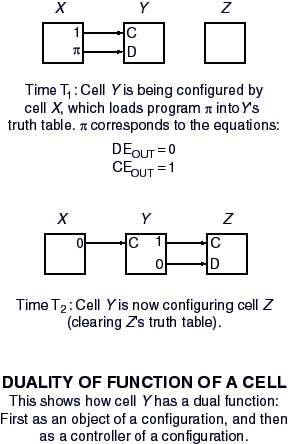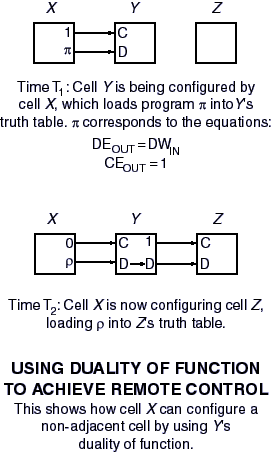
Cells within the cell matrix have a special characteristic called self-duality. This refers to the fact that no cell is predisposed to either being a source or a target of configuration operations. Cell X may be configuring cell Y, and, once configured, cell Y may in turn configure cell Z (shown on the right). This ability of a cell to switch from being configured to configuring another cell is key to the power of the cell matrix.

Operations such as this require a sequence of configuration steps, some of which will build up access paths to non-adjacent cells, and some of which will use those access paths to configure non-adjacent cells (click here for an example). A cell library is one way to generate such sequences (see self configurable).
other features . core
